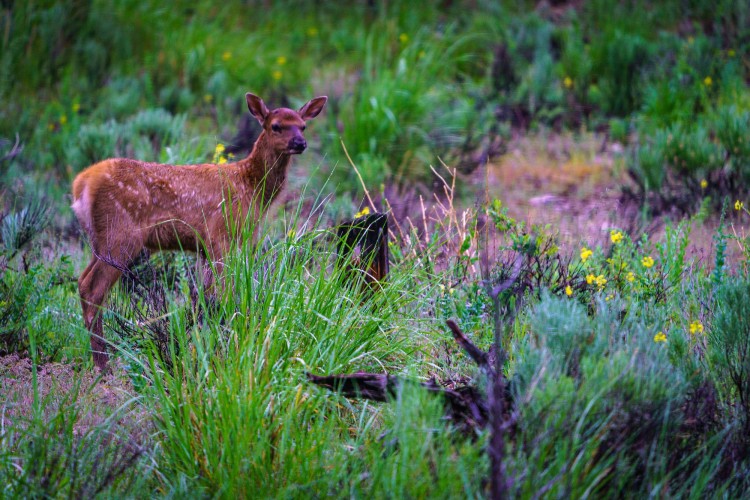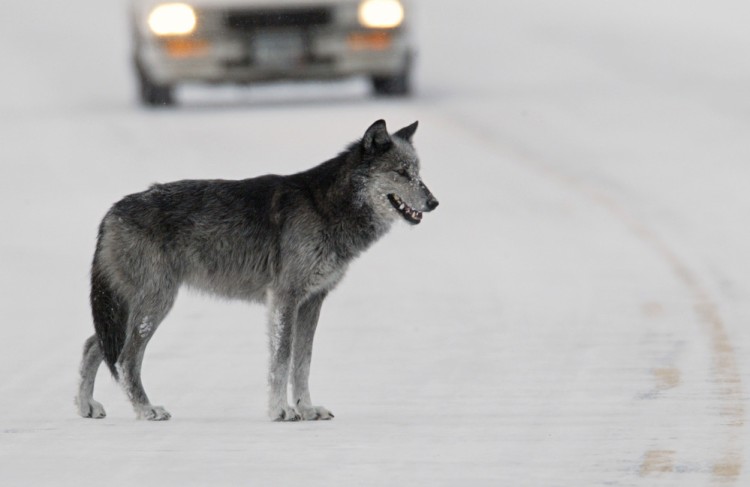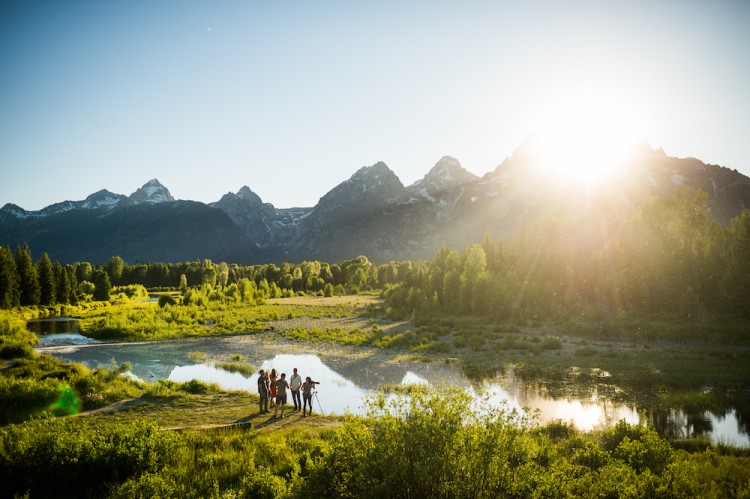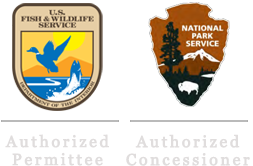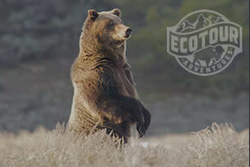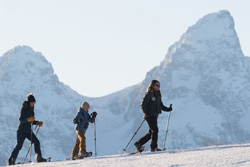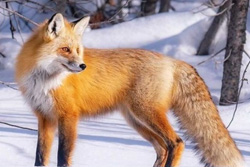Secrets of Fall Foliage of Grand Teton and Yellowstone National Parks
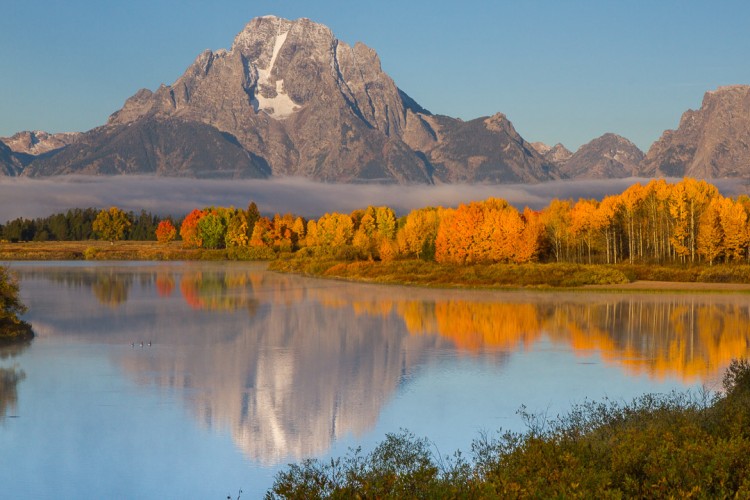

Golden aspen trees light up the landscape at Oxbow Bend in Grand Teton National Park.
Fall is coming to Jackson Hole. Aspen groves in northern Grand Teton National Park are about to begin their seasonal color change. Soon a ribbon of bright orange, yellow, and even red will flow down the cottonwood forests of the Snake River as the trees prepare for their winter slumber.
The annual progression of fall colors marks the end of a seasonal growth cycle of our deciduous (plants which shed all of their leaves at the same time) trees and shrubs. Leaf peepers are flocking to Jackson Hole to observe this seasonal spectacle as well as enjoy our abundant wildlife. It's one of our favorite times of year to photograph and explore Grand Teton and Yellowstone National Parks. Want to learn more about the science of changing leaf color? Read on.
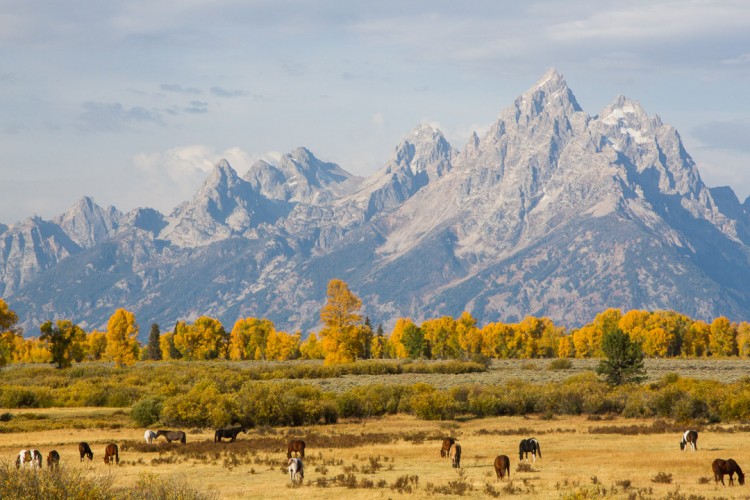
Horses grazing beneath the Tetons in northern Jackson Hole
Right now, shorter days and longer nights are beginning to have a profound impact on plants. At the base of each leaf, cells are rapidly dividing, forming a layer of loose cells known as the Abscission Layer.
Throughout the summer this junction was a transportation superhighway. The roots sent minerals and water up to the leaf, key components in the manufacture and use of the green pigment chlorophyll. Along with several other pigments we will talk about in a moment, chlorophyll harnessed the energy of the sun to photosynthesize, creating carbohydrates, which were in turn shipped down to the roots to fuel later growth.
Here Come the Colors!
As longer nights continue to increase cell division in the abscission layer, we are already seeing chlorophyll production slow on wildlife safaris of Grand Teton and Yellowstone National Parks. As the green color of chlorophyll disappears, other pigments, formerly hidden, are beginning to appear.
Yellow
The beautiful golden yellow color we see in the cottonwoods along the Snake River, and the aspen groves of the Teton Mountain Range are caused by pigments known as Xanthophylls. These pigments, like chlorophyll, also harvest energy from the sun, but are also found in egg yolks and even human blood plasma!
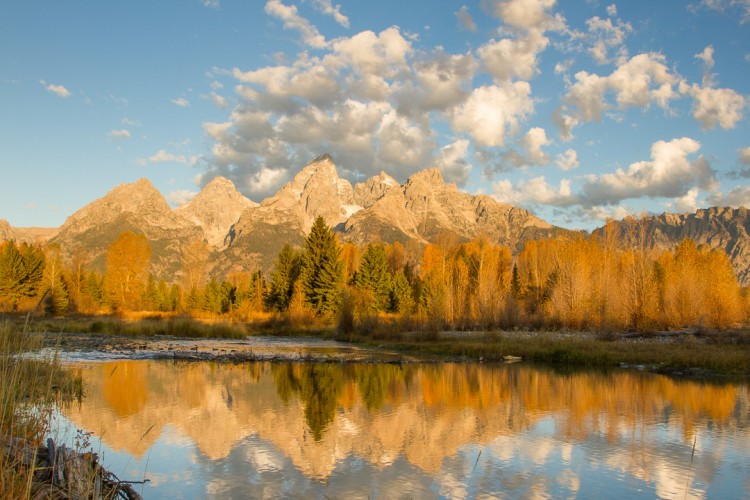
Beaver dams in a side channel of the Snake River at Schwabacher Landing act as spectacular reflecting pools, especially as the cottonwood trees turn yellow.
Orange
Carotenoids also work with the yellow Xanthophylls and green Chlorophylls to harvest light energy throughout the summer. Look for them on aspen and cottonwood trees, as well as willows and other smaller shrubs growing in Jackson Hole.
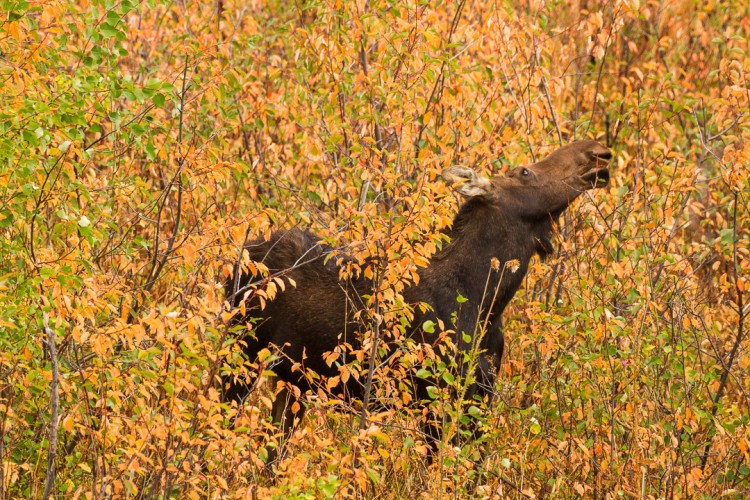
A cow moose strips the orange carotenoid laden leaves off of a bush in Grand Teton National Park.
Red and Purple
Red and purple pigments, known as Anthocyanins, are less common than yellow and orange but will also make an appearance in the fall. Remember the abscission layer? As it cuts off the movement of molecules, sugars become trapped in the leaf, much of which becomes the pigment anthocyanin. East coast maple trees are particularly prized for their red colors in fall but we have numerous shrubs which will turn red including the much smaller Rocky Mountain Maple. Look for it near water, especially in the Snake River Canyon south of Jackson Hole.
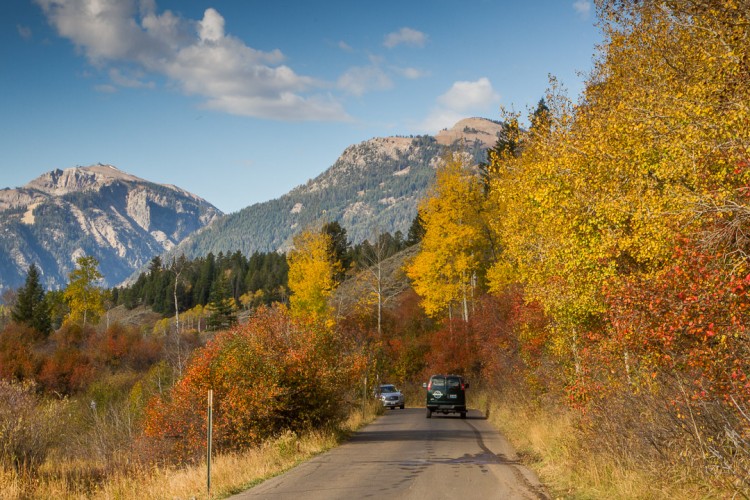
Hawthorn Trees along the Moose-Wilson Road turn red from Anthocyanins. Hawthorns also produce an edible berry favored by both black and grizzly bears!
As autumn progresses, the cells in the abscission layer become more dry and “corky”. Connections between cells weaken and the leaves eventually break off, blanketing the ground with color. This carpet of yellow, orange, and red won’t last long however, as light and freezing temperatures cause the pigments to break down. A final group of pigments emerges, the tannins.
Throughout the life of a leaf, tannins aid it in resisting decay and become visible only after other pigments have degraded. Elk and other hooved mammals may dig up these leaves from beneath the snow in winter, or they will gradually decompose back into the soil completing the life cycle.
Factors influencing the quality of fall foliage
Though the start of our fall foliage season is relatively fixed to day length, temperature, sunlight, and soil moisture all greatly influence the quality of fall foliage display. Want more anthocyanins (Reds and Purples)? Hope for abundant sunshine, which speeds up the decay of green chlorophyll, combined with cool temperatures. However, if the temperature drops too much, to below freezing, the creation of red and purple colors will also be impeded.
Worst of all is an early frost, which can prematurely end the foliage season.
Finally, drought conditions during the growing season can cause the abscission layer to form early, leading to leaves dropping before development of fall coloration! The trees we've seen so far this year don't seem to have this problem so we're hopeful for a good fall with out an early drop!
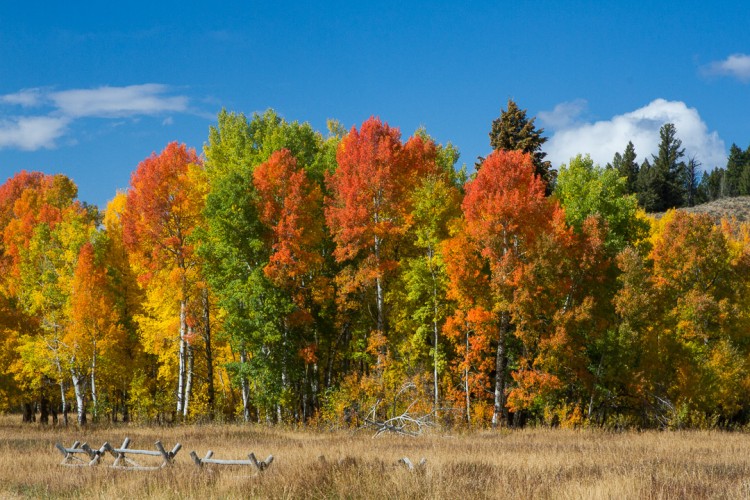
One of our favorite aspen groves in Grand Teton National Park displaying all four pigments at once!
Recipe for a perfect Fall Foliage Season
We are on track for some great leaf peeping this fall and have fingers crossed for dry, sunny, and warm autumn days with cool but frostless nights.
Regardless of the weather, fall is always one of our favorite times to explore Grand Teton and Yellowstone National Parks. Bull elk are bugling, bears are bingeing on all the food they can gather, and the great migrations of birds and mammals across the Greater Yellowstone Ecosystem are, or will soon be in motion.
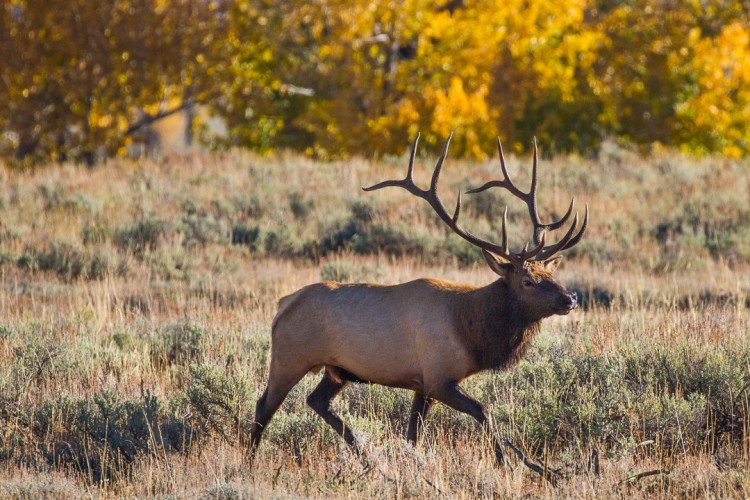
Listening to the sound of bull elk bugling beneath golden fall foliage is one of our favorite experiences in Grand Teton National Park!
Join us on a half day, full day, or multi-day safari by clicking the Book Now! Button at the top of the website or give us a call at (307) 690-9533. We hope to see you soon!
Photos and blog by Naturalist Josh Metten
Guide Mark Byall also contributed to this post.





